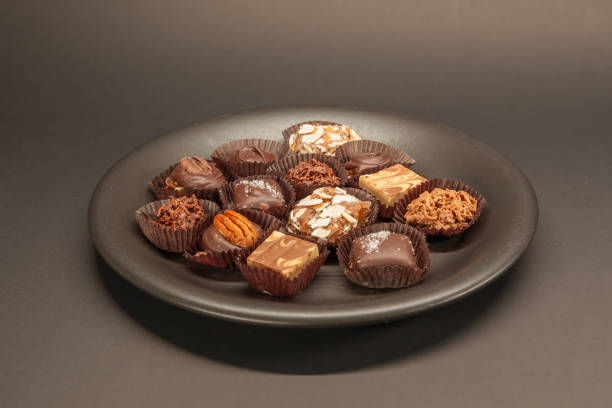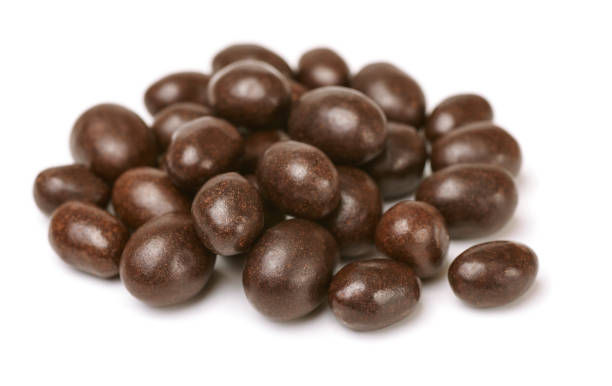Chocolate Covered Nuts: A Timeless Treat
- jpatricechocolate
- Apr 3
- 5 min read

Chocolate covered nuts are a timeless treat that combines the rich, creamy taste of chocolate with the satisfying crunch of nuts. This delightful combination has been enjoyed for centuries, and its popularity continues to grow. Whether you're a fan of classic pairings like chocolate and almonds or more adventurous combinations like chocolate and chili-spiced pecans, there's a chocolate covered nut for every palate. In this blog, we'll explore the history, types, making process, health benefits, and where to buy these delectable treats. We'll wrap up with a conclusion and answer some frequently asked questions to help you become a true connoisseur of chocolate covered nuts.
The History of Chocolate Covered Nuts
The origins of chocolate covered nuts are somewhat murky, but chocolate itself has a long and storied history. Chocolate was first consumed as a bitter beverage by ancient Mesoamerican civilizations, such as the Aztecs and Mayans, thousands of years ago. It wasn’t until the 16th century that chocolate made its way to Europe, where it was sweetened and transformed into the confection we know today. Nuts, meanwhile, have been a dietary staple for millennia, valued for their nutrition and versatility.
The pairing of chocolate and nuts likely emerged in Europe during the 18th or 19th century as chocolate became more accessible and confectioners began experimenting with new flavors and textures. By the early 20th century, chocolate covered nuts gained widespread popularity in the United States, with treats like Goobers (chocolate covered peanuts) becoming household names. Today, this delightful snack is enjoyed globally, with countless variations ranging from mass-produced candies to artisanal creations crafted by small-batch chocolatiers.
Types of Nuts Used in Chocolate Covered Treats
One of the joys of chocolate covered nuts is the variety of nuts you can choose from. Each type brings its own unique flavor and texture, creating a different experience with every bite. Here’s a rundown of some popular options:
Almonds: Known for their mild sweetness and satisfying crunch, almonds are a classic choice. They’re often roasted before being coated to enhance their flavor.
Peanuts: Earthy and hearty, peanuts are a staple in chocolate covered nut clusters, pairing especially well with milk chocolate.
Cashews: Creamy and buttery, cashews offer a softer texture that contrasts beautifully with the firmness of chocolate.
Hazelnuts: A favorite in European confections, hazelnuts have a rich, nutty flavor that complements both milk and dark chocolate.
Macadamia Nuts: These indulgent nuts, often associated with Hawaiian cuisine, add a luxurious touch to any chocolate treat.
Pistachios: Less common but equally delicious, pistachios bring a subtle saltiness and vibrant green color to the mix.
Beyond these staples, some chocolatiers venture into more exotic territory with nuts like Brazil nuts, walnuts, or pecans. The diversity ensures there’s a chocolate covered nut to suit every taste, whether you prefer something familiar or a little more adventurous.
The Making Process: From Nut to Chocolate Delight
Crafting chocolate covered nuts is both an art and a science. The process begins with selecting high-quality nuts, which are typically roasted to bring out their natural flavors and achieve a crisp texture. Roasting also removes excess moisture, helping the chocolate adhere properly.
Next comes the chocolate—dark, milk, or white—depending on preference. The chocolate must be tempered, a process that involves melting it and then cooling it to specific temperatures. Tempering stabilizes the cocoa butter, ensuring the chocolate has a glossy finish and a satisfying snap when it hardens. Untempered chocolate can look dull and streaky, so this step is crucial for quality.
Once tempered, the nuts are coated using one of several methods:
Dipping: Each nut is individually dipped into melted chocolate, often with a fork or dipping tool, then set aside to harden.
Panning: Nuts are placed in a rotating drum, and chocolate is gradually added, coating them evenly as they tumble. This technique is common in commercial production.
Clusters: For a rustic touch, nuts are mixed with melted chocolate and spooned into small mounds on a baking sheet to set.
After coating, the nuts cool and harden, either at room temperature or in a refrigerator. The result is a perfectly balanced treat that melds the smoothness of chocolate with the crunch of nuts. For those who enjoy variety, many chocolatiers offer chocolate covered nuts with assorted flavors. These might include sea salt for a savory twist, chili powder for a spicy kick, or fruit essences like orange or raspberry for a fresh burst, making each bite a unique experience.
Health Benefits and Nutritional Considerations
While chocolate covered nuts are undeniably a treat, they do offer some nutritional perks when enjoyed in moderation. Here’s a closer look:
Nuts: Packed with healthy monounsaturated fats, protein, fiber, and essential nutrients, nuts are a nutritional powerhouse. Almonds, for instance, are rich in vitamin E, while walnuts provide omega-3 fatty acids.
Dark Chocolate: High-cocoa dark chocolate contains antioxidants, particularly flavonoids, which may support heart health and cognitive function. It also has less sugar than milk chocolate.
That said, chocolate covered nuts can be calorie-dense due to the added sugar and fat from the chocolate. A small handful (about 1 ounce) typically ranges from 150 to 200 calories, so portion control is essential. Choosing dark chocolate varieties and keeping servings modest allows you to enjoy the benefits without overindulging.
Where to Buy Chocolate Covered Nuts
Chocolate covered nuts are widely available, but for the best quality, consider these options:
Specialty Candy Stores: These shops often stock a broad selection, including unique flavors and premium ingredients.
Gourmet Grocers: Retailers like Whole Foods or Trader Joe’s carry chocolate covered nuts, often with organic or fair-trade options.
Online Retailers: Websites such as Amazon, Etsy, or specialty chocolate vendors offer everything from bulk bags to gift-ready boxes.
Local Chocolatiers: Supporting small businesses provides access to handcrafted treats made with care and creativity.
Alternatively, making your own chocolate covered nuts at home is a fun and rewarding option. All you need are your favorite nuts, high-quality chocolate, and a bit of patience. Melt the chocolate, dip the nuts, and let them set on parchment paper—it’s an easy way to customize flavors and enjoy a fresh, homemade treat.
Conclusion: A Treat Worth Savoring
Chocolate covered nuts are more than just a snack—they’re a celebration of flavor, texture, and craftsmanship. From their rich history to the wide variety of nuts and flavors available, these treats offer something for everyone. Whether you’re savoring a classic chocolate-covered almond or experimenting with a spicy, sea-salted cashew, each bite is a reminder of life’s simple pleasures.
Next time you’re craving something sweet and satisfying, reach for a handful of chocolate covered nuts. Or take it a step further and try making your own. With so many options to explore, you’ll never tire of this timeless delight.
Frequently Asked Questions (FAQs)
1. How should I store chocolate covered nuts?
Store them in an airtight container at room temperature, away from direct sunlight and heat. In warmer climates, refrigeration can prevent the chocolate from melting.
2. Are chocolate covered nuts safe for people with nut allergies?
No, they’re not suitable for those with nut allergies. Alternatives like chocolate-covered seeds or dried fruits may be an option.
3. Can I use white chocolate for chocolate covered nuts?
Yes! White chocolate pairs wonderfully with nuts like macadamias or pistachios. Just temper it properly for the best texture.
4. How long do chocolate covered nuts last?
When stored correctly, they can last several weeks, though they’re freshest within two to three weeks.
5. Are chocolate covered nuts a good gift?
Absolutely! They’re versatile, widely loved, and can be beautifully packaged for any occasion, from holidays to thank-yous.




Comments